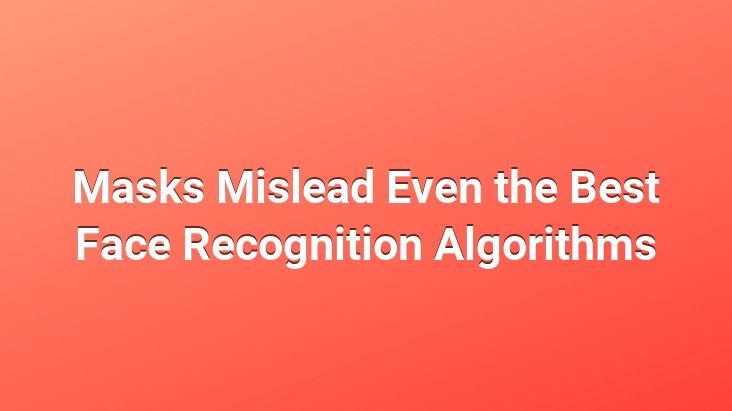
Due to the coronavirus that emerged at the end of last year and affected the whole world this year, people started to take precautions in their daily lives.. At the beginning of these measures, masks used to protect against the virus come.. In a report released today by NIST (National Institutes of Science and Technology), researchers tried to assess the possibility that people wearing protective masks might be misleading facial recognition algorithms.. Tests were conducted with commercial facial recognition algorithms from 89 major companies such as Panasonic, Canon and Tencent.. In experiments with masked photographs with these algorithms, models have been found to have an error rate of 5% to 50%.
Mei Ngan, an NIST computer scientist and co-author of the report, said in a statement, “With the arrival of the epidemic, how are the masked faces of face recognition algorithms? We need to figure out that it will detect. First, we tested the face recognition algorithms developed before the pandemic with masked photos and analyzed the results.. Later this summer, we will test and analyze the mask and face recognition systems that emerged after the pandemic.”
NIST Tried Different Methods
NIST’s Facial Recognition Vendor Test (FRVT) program, Department of Homeland Security Science and Technology directorate, Office of Biometric Identity Management, and Office of Border Protection A project that receives support from. NIST first tested the algorithms with a “one-to-one” comparison method used for unlocking phones and validating passports.. Algorithms were able to compare the masked photo of the person with other photos of the person. However, they could not recognize these faces among the 6 million human faces used in FRVT.
“Do masks deceive face recognition algorithms?” The team started their research with the question and found that different masks are used in real life.. The team found nine different mask variants, differing in color and nose coverage.. Masks are shown in black and blue colors.
Masked faces significantly reduced algorithm accuracy, according to research. The error rates of the best face recognition algorithms, which have an excellent error rate of 0.3% with unmasked photos, increased to 5% in masked photos.. In other algorithms, it was between 20% and 50%.
In addition, the algorithms could not handle masked faces.. That is, they could not detect and extract features from faces in order to make effective comparisons.. The more a mask covers the nose, the higher the error rate.. Error rates lower output on blue, round surgical masks, and round black masks. “We await further studies on sensitivity to face masks,” Mei Ngan said in her statement.
It is not clear how long the new masks we normally use will take place in our lives.. Technology has also kept up with the new normal and directed its development to this field.